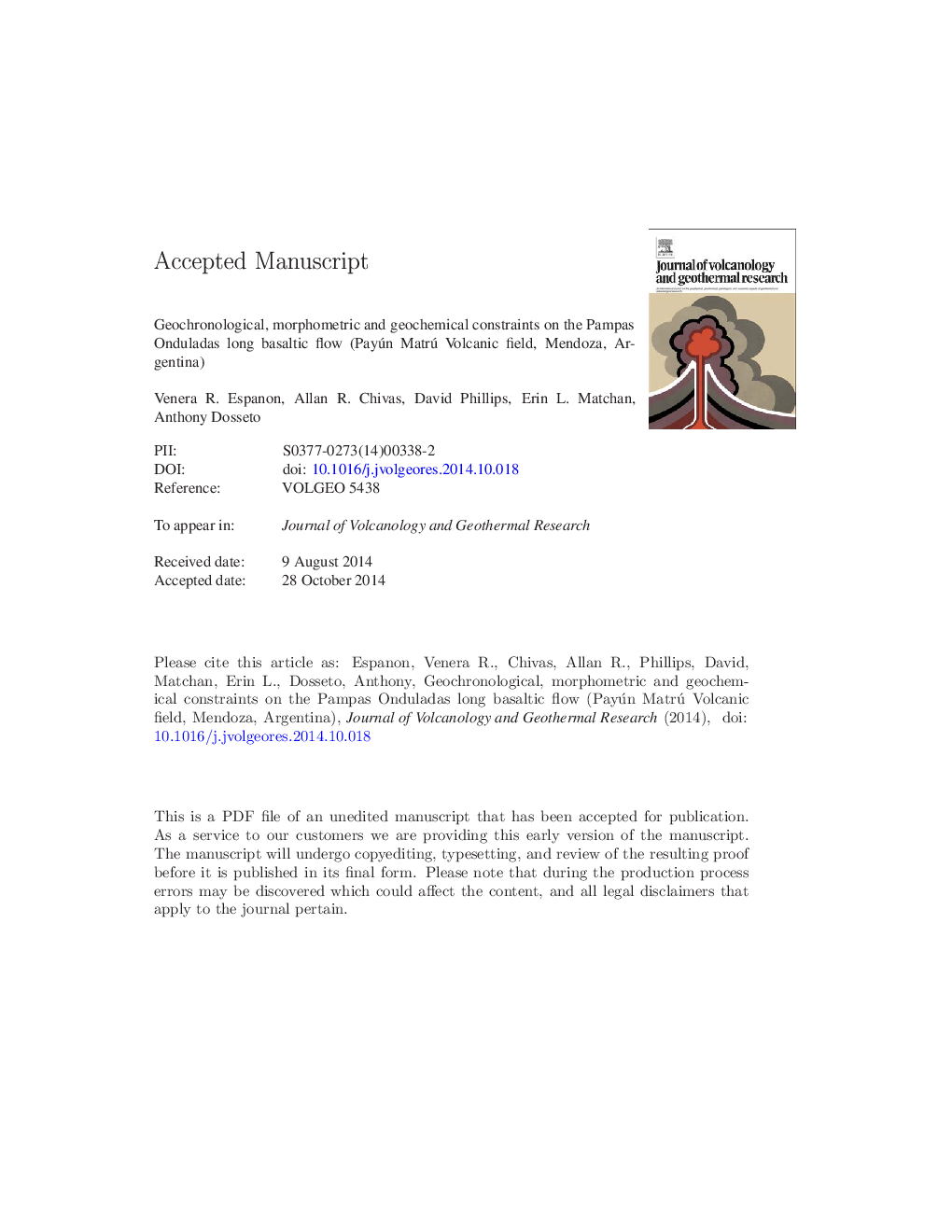| Article ID | Journal | Published Year | Pages | File Type |
|---|---|---|---|---|
| 6440036 | Journal of Volcanology and Geothermal Research | 2014 | 36 Pages |
Abstract
The methods used to assess the rheological properties include the application of several GIS tools to a digital elevation model (DEM) to determine the length, width, thickness, volume and topographic slope of the flow as well as algorithms to determine its density, viscosity and temperature. The slope of the Pampas Onduladas flow determined from the initial part of the flow on the eastern side of La Carbonilla Fracture to its end point in the province of La Pampa is 0.84% (0.29°), the steepest substrate amongst long Quaternary flows. The rheological properties, such as density viscosity and temperature from the Pampas Onduladas flow are similar to values reported for other long Quaternary flows. However, the minimum volume calculated is relatively low for its length compared with other long Quaternary flows. Therefore, the extension of the Pampas Onduladas flow was probably controlled by a steep slope, combined with an insulating mechanism, which helped in providing optimal conditions for a travel length of almost 170 km.
Related Topics
Physical Sciences and Engineering
Earth and Planetary Sciences
Geochemistry and Petrology
Authors
Venera R. Espanon, Allan R. Chivas, David Phillips, Erin L. Matchan, Anthony Dosseto,
